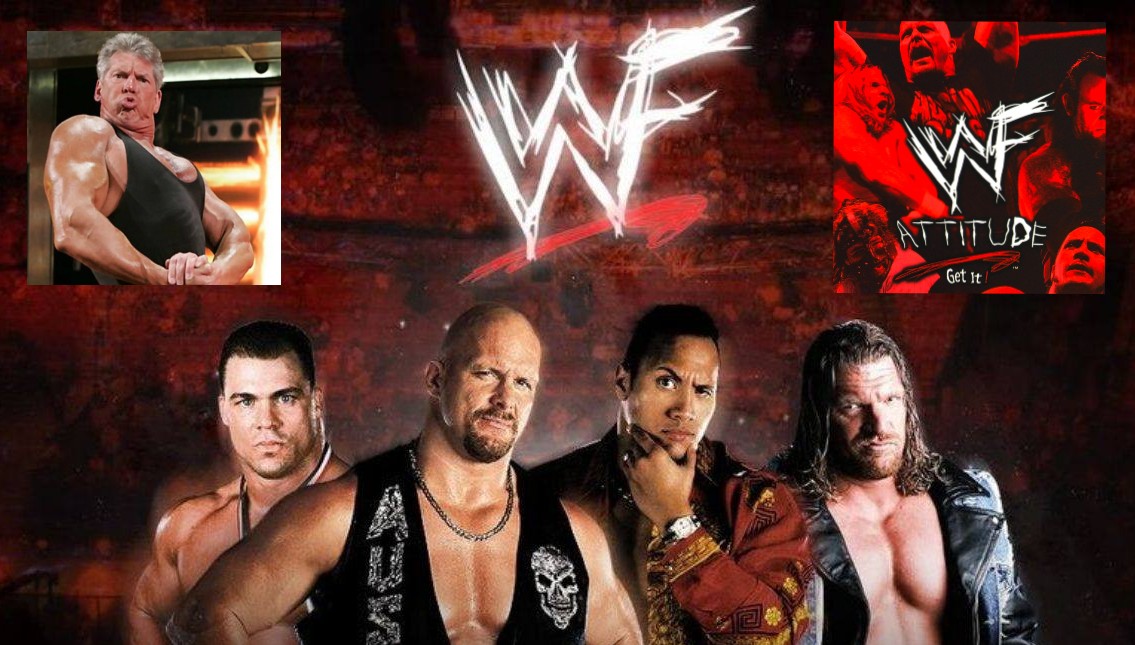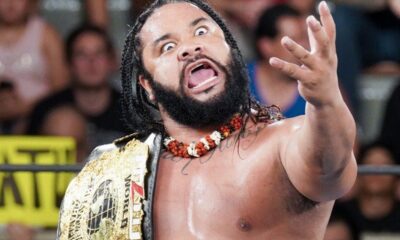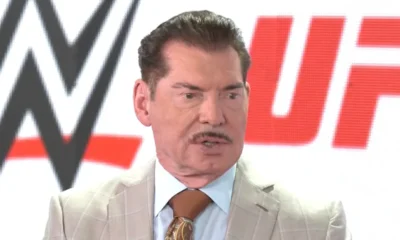
Perhaps the era in which the pro wrestling industry became even more of a household name than it already was, the Attitude Era turned a lot of heads.
Often it created a lot of controversy and would often get the WWE—WWF at the time—in loads of trouble, it was definitely a precursor of what the industry eventually became…a global phenomenon.
Today we’ll be looking at the Attitude Era in full detail, how it started, how it changed the landscape, and how it would eventually fall.
The end of the Golden Era
For something to start, something else needs to end. For years the pro wrestling industry was all about gimmick, and when we say gimmick we mean the most cartoonish characters you’ve ever imagined. Essentially there were big guys out there pretending to be repo men, garbage pickers, Mounties, or larger than life hulks.
This of course worked for what it was and in the Golden Era of wrestling, stars like Hulk Hogan certainly took the business to heights it had never seen. Hulk Hogan and the WWF was a household product, but not yet as much as it would one day become.
A lot of money would be made in the aforementioned Golden Era, but there were still new heights to reach on the horizon.
A tired old product
Vince McMahon did have a vision for a younger guard—what he called a ‘youth movement’—and in so doing would push stars like Hogan and Randy Savage off to the side to make way for young talent. The problem was, there was no vision for that younger crowd; all he was doing was trying the same old things.
This was also seen recently in the WWE product before he took his retirement this past summer, making way for a new vision…Triple H’s vision, and it has improved since.
Back in the mid-nineties however, characters in the WWF failed to reach an aging audience, and the product failed big time, as did profits plummet.
WCW would start to get some mainstream attention in 1995 when it started to go head-to-head in that Monday night timeslot…the same timeslot as WWE’s Raw, and before long they would take over in the ratings…offering an edgier product to that aging audience, and a nod in a new direction was actually started by the likes of Hulk Hogan…the very same man that had been pushed aside by Vince McMahon and the WWF.
The nWo
Hulk Hogan, Kevin Nash and Scott Hall would start the faction known as the nWo, and off to the races the industry would be…Vince McMahon would have no option but to change with the times, and so he did.
He didn’t grasp this at first but soon, because of the insistence of stars like Shawn Michaels and Triple H, a new direction would be found and embarked upon, and these stars along with another would take to it like ducks to water, as the saying goes…
DX
Degeneration X pushed the boundaries of what was acceptable on national television…and on what was essentially known as a sports program back then. Pushing the envelope in terms of a more mature subject matter was what they were all about.
Soon the audience would slip back over but it would take one man in particular to get that audience all the way back to WWF programming, and that was Stone Cold Steve Austin, but more on him in just a bit.
The Montreal Screwjob
We’ll go more into detail with this incident in a later piece, and I promise for you younger readers out there who weren’t around for it, it’ll be juicy for sure, but it would be this event that would garner quite a bit of attention.
Negative attention at first, yes, but eventually fans would see that the evil Vince McMahon was worth watching, at least to see just who he would mess with next. Turns out he’d be messing with the wrong man this time out.
The day the music died for WCW
And no, I’m not talking about when Vince McMahon purchased the company back in 2001…I’m talking about the night that the audience turned their collective backs on WCW, and it would symbolize the end of WCW’s reign at the top of the industry and fully open the doors for the Attitude Era to bloom in full.
The night that Steve Austin and Iron Mike Tyson would mix it up in the ring—not for a fight but a confrontation worth millions of dollars…quite literally.
The night in question—an episode of Raw—took over the ratings war and showed that these guys (WWE) just didn’t mess around, proving that they offered a show that pushed the boundaries of what was real and fake, and had you guessing what was promo and what was a shoot.
Most kids at the time thought Mike Tyson and Steve really hated each other, and the feud between DX and Steve Austin was suddenly one worth paying attention to, and the lead-in to WrestleMania 14 was set, and set up to make big numbers.
1997 to 2002
Those were the years that the Attitude Era was in full bloom, and if you look at the entirety of that roster, you had an incredible lineup of incredible talents that pushed boundaries in their very own way.
The Rock was a natural born star and his character, once he found it, turned a lot of eyes to the product, and he offered Steve Austin a great adversary to fight from week to week.
Mick Foley brought a hardcore element to the industry. He had already made a name for himself in Japan and in ECW as being the king of hardcore matches, and his bringing that element to the WWE product certainly was something that was necessary.
And there were plenty of other stars that played their part to a T.
A fall of an era
The Attitude Era gave way to the Ruthless Aggression Era. We went into that era last time, and covered it in detail, and that era pushed boundaries all its own, but the pushing of boundaries would come to an end.
As stated above, the business would come under fire for many reasons, but the old pushing of the envelope would get them into trouble often. The company was also often sought after by the feds because of steroid allegations…McMahon also brought up on charges for this in the early nineties…that known as the steroid scandal of course.
But it would be a real life tragedy, the death and killing (alleged murder/suicide) of Chris Benoit and his family that would have Vince McMahon and company running far and as fast as they possibly could from an ‘attitude’ of any kind, pushing the envelope and men with bulging biceps and impossible physiques, and that would dawn what was known as the PG Era…a story for another time.
Glad you could join us for this look back, dear readers. Stay tuned for more historical pieces like this on the pro wrestling industry, and for all of your pro wrestling news, keep it glued right here, to the Pro Wrestling News Hub.
NEXT: More Cuts To The NXT Roster On The Horizon—Bodhi Hayward Cut For Reasons Undisclosed














